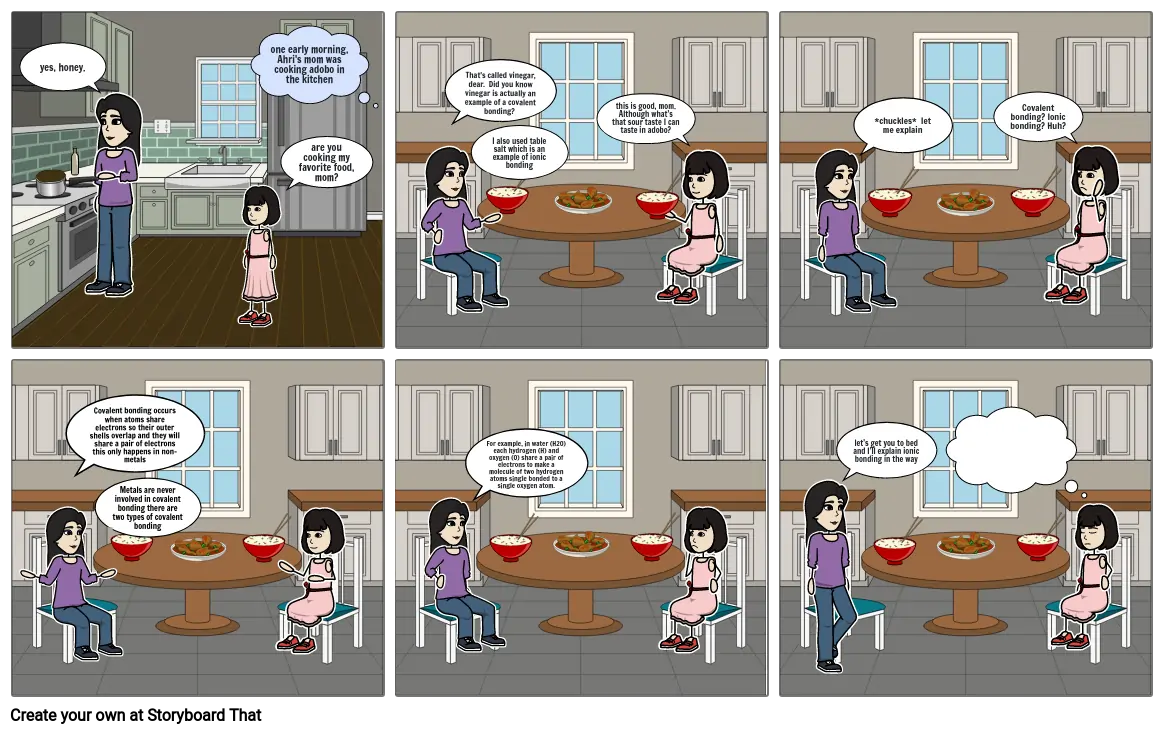Covalent and Ionic Bonding

Storyboard Text
- yes, honey.
- one early morning, Ahri's mom was cooking adobo in the kitchen
- are you cooking my favorite food, mom?
- That's called vinegar, dear. Did you know vinegar is actually an example of a covalent bonding?
- I also used table salt which is an example of ionic bonding
- this is good, mom. Although what's that sour taste I can taste in adobo?
- *chuckles* let me explain
- Covalent bonding? Ionic bonding? Huh?
- Covalent bonding occurs when atoms share electrons so their outer shells overlap and they will share a pair of electrons this only happens in non-metals
- Metals are never involved in covalent bonding there are two types of covalent bonding
- For example, in water (H2O) each hydrogen (H) and oxygen (O) share a pair of electrons to make a molecule of two hydrogen atoms single bonded to a single oxygen atom.
- let's get you to bed and I'll explain ionic bonding in the way
-
Over 30 Million Storyboards Created

